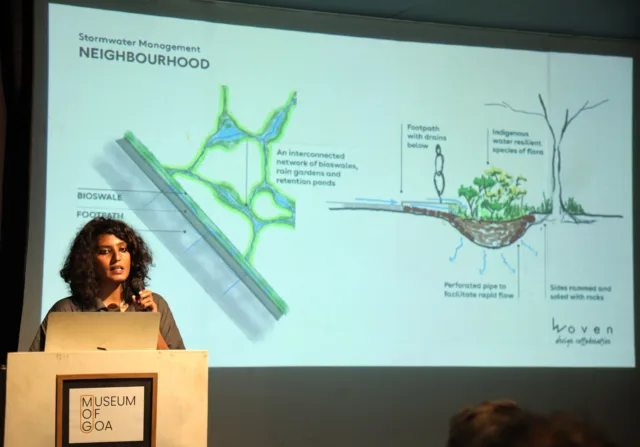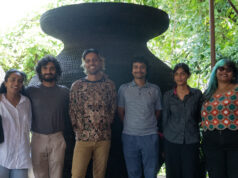Goa’s groundwater table, which is being fast depleted by rapid urbanisation and climate change, can be recharged through the implementation of rainwater management systems using indigenous techniques and nature-based infrastructure, which is vital to replenishing it, according to architect and bio-regional planner Nisha Mary Poulose.
At the recently held MOG Sundays talk at the Museum of Goa (MOG), Pilerne, Siolim-based Poulose stated that the mass urbanisation of land in Goa is preventing rainwater retention in the soil due to widespread concrete usage and deforestation. “This leads to large swathes of topsoil getting washed away. Mass consumption of water for swimming pools, unsustainable forms of agriculture also leads to large volumes of water being extracted,” she said.
Poulose is an award-winning green architect and regional planner, with over 15 years of experience in environmental planning, land-use planning and natural architecture. In 2015, she was the recipient of an award in the Government of India’s ‘Mera Shahar Mera Sapna’ competition and lauded by Prime Minister Narendra Modi for her ideation for ‘Smart Cities’ in India. She also founded the Woven Design Collective, a global regenerative design and planning firm that utilises an interdisciplinary, holistic approach to developing habitat and infrastructure.
Her talk focused on effective rainwater management in Goa, in the wake of unseasonal rainfall and drought due to human-wrought climate change. According to the Indian Meteorological Department, the state has received 3,867.1 mm rainfall since June 1, 2024, with July recording the highest rainfall in 124 years. This led to water accumulation, flood-like situations and soil erosion across several talukas. She also proposed a cost-effective solution to prevent the impending man-induced natural crises in Goa.
“Communities in Goa need to come together to rebuild indigenous knowledge practices for rainwater management, aided by administrative bodies at the grassroots level like the panchayat. Interconnected networks of bioswales (shallow trenches with indigenous vegetation that manage stormwater runoff by impediment, filtration, and percolation into the ground), rain gardens and retention ponds can greatly help neighbourhoods manage rainwater by slowing runoff, while also conserving the local flora and fauna.”
Poulose further emphasised the importance of community involvement, including the role of local festivals, in rainwater management. “Shifting away from borewells that directly deplete the local aquifer and reviving wells around the state are necessary. This aids in capturing the maximum amount of water as close to the source of falling as possible, making it consumable. Local festivals like São João encourage the upkeep of wells, which offers leeway into making rainwater management an integral part of public consciousness,” she said.






